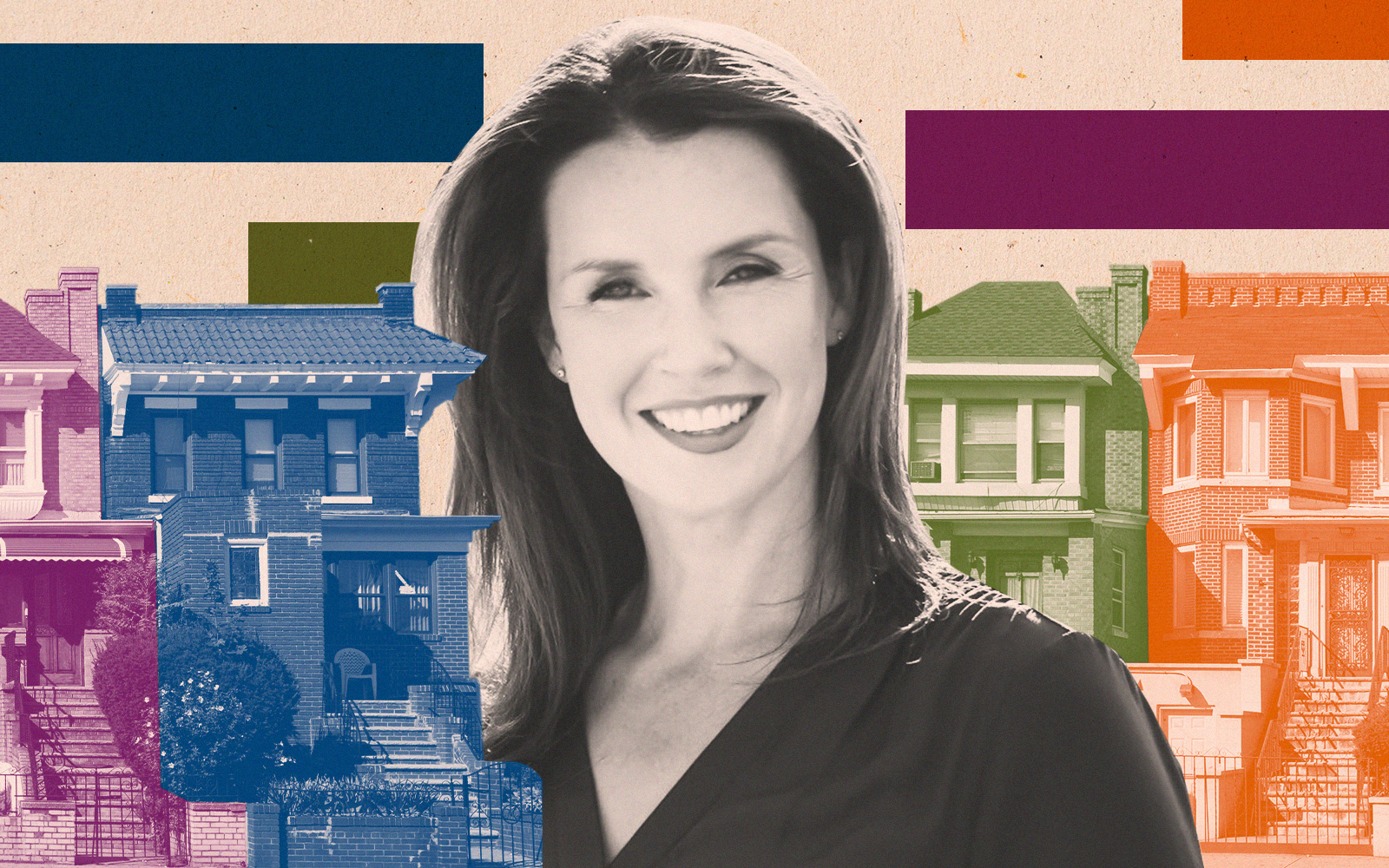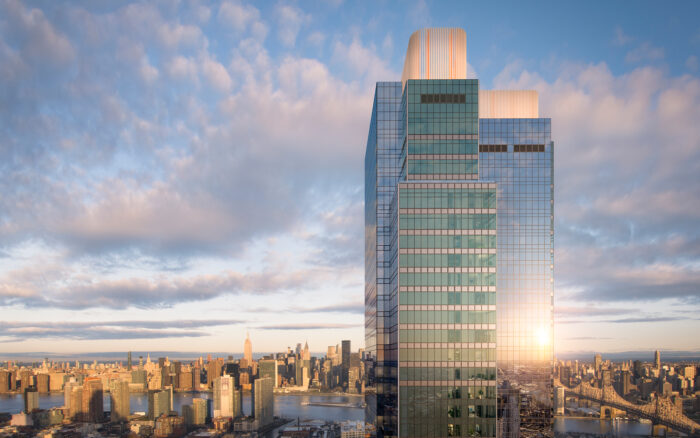Across the East River and beyond the Pepsi-Cola sign lies a borough once dominated by budget home buyers and neighborhood loyalists.
But since developers set their sights on Queens, the formerly industrial skyline has been transformed into one peppered with luxury residential towers that have pushed the market to new heights.
With glimmering glass exteriors and amenities lists reminiscent of Billionaires’ Row, the record-setting additions have managed to outshine Brooklyn and Manhattan in the eyes of a new crowd.
“It’s a first-choice market. Once, it was a value play, but now it’s a first choice,” said Hunter Frick, the chief marketing officer of Brown Harris Stevens Development Marketing who heads sales at new developments in Hunters Point and Astoria.
By the numbers
New development took off in Queens over the past decade with thousands of buildings ready to welcome new residents. More than 56,000 homes were completed in the borough between January 2010 and June 2022, according to the Department of City Planning’s housing database.
Condo projects in the borough peaked in 2019, when the city approved 415 plans, almost 10 times more than in 2013, TRD Pro data shows. While the number of accepted projects has dipped since the pandemic — with less than 200 in 2020 and 2021 and just 248 last year — new development remains firmly above the numbers recorded each year between 2013 and 2016.
“[New development] inventory in Queens was not as decimated as we saw in Brooklyn or Manhattan compared to before the pandemic,” said appraiser Jonathan Miller.
The wave of new development isn’t equal across neighborhoods in Queens. Between 2010 and June 2022, more than 17,700 homes were completed in Long Island City, Sunnyside and Woodside — packaged together as Community District 2 in the DCP’s housing data.
Long Island City and Hunters Point — adjacent riverfront neighborhoods with some of the borough’s top-selling buildings — had nearly 600 sponsor units on the market in May. In Hunters Point, the average sale price of a sponsor unit is $1.2 million, while Long Island City’s is $730,000. Flushing, known for its sprawling Chinatown and the largest urban center in Queens, has 340 unsold units with an average sale price of $890,000.
Home prices are also on the rise, especially deeper into the borough, in neighborhoods such as Clearview and those on the Rockaway Peninsula, where prices have more than or nearly doubled over the past five years. Overall, Queens is home to 62 neighborhoods with higher median prices last year than in 2019.
Building up the borough
In the early 2000s, under Mayor Michael Bloomberg, the city rezoned more than a dozen neighborhoods in Queens, along with others across the five boroughs. While the rezoning protected some neighborhoods, such as Jamaica, Kew Gardens and parts of Flushing, from overdevelopment, it also greenlit residential and retail development in Long Island City — now the home of a slew of condo and rental properties and such major retail outposts as Target and Trader Joe’s.
With more space for the taking, an established scene and an abundance of transportation, developers like Rockrose, Silverstein Properties and TF Cornerstone started buying up lots along the East River and a handful of blocks away in Court Square.
“When you think about Queens, and Long Island City, specifically, it has a lot of what a neighborhood that’s going to be developed needs,” Rockrose president Justin Elghanayan said. “It has this art history with [MoMA PS1], the Noguchi Museum, Socrates Sculpture Park. That’s an important thing that creates a certain culture, and then it also has just spectacular transportation.”
Elghanayan said that Rockrose was among the first to build a major rental property in Court Square — the 42-story Linc LIC, which opened in 2013. The building, at 43-10 Crescent Street, outperformed the developer’s expectations with rents about 20 percent higher than specified in their original plan.
With a win in the books, Rockrose developed more projects in the area, including the Cove and the Hayden on Hunter Street and its most recent building in the square, the Eagle Lofts on Queens Street.
“That building really was a good example for people that this is a successful place to build, and then people built,” Elghanayan said. “Then we built more.”
As the share of residential properties grew, so did retail options in the neighborhood, which has about 350,000 square feet of retail space planned, according to data from the Long Island City Partnership. Last fall, Asian grocery store chain H Mart was a major arrival in the neighborhood, which is also home to Michelin star-rated Mexican restaurant Casa Enrique.
“For a long time, it was sort of like Long Island City is going to happen. It’s going to become a neighborhood. That’s all behind us now.”
“I don’t even think of Court Square as a developing neighborhood anymore. It’s there,” Elghanayan said. “For a long time, it was sort of like Long Island City is going to happen. It’s going to become a neighborhood. That’s all behind us now.”
As developers continue to build up the neighborhood, the city’s zoning laws have protected the core of Long Island City from becoming jam-packed with glossy supertalls, according to Sam Charney, head of the development firm Charney Companies.
The neighborhood’s tallest residential buildings line the waterfront and cluster around Court Square, leaving the blocks in between open for smaller, multi-family development opportunities.
“[The city] created almost a barbell in between those two parts of the neighborhood,” said Charney, who developed The Jackson, an 11-story condo, and a new rental project, The Green House. “That makes the inner part of LIC feel so approachable.”
Although Long Island City was already known as a transportation hub, a 2018 announcement that Amazon would build an East Coast headquarters in the neighborhood officially put it on the map, said Charles Yu, the Long Island City Partnership’s vice president of economic development.
“We are now on the map. People know we’re in Queens. People know we are just one stop away from Midtown,” Yu said.
Amazon withdrew the announcement, but it shone a spotlight on the neighborhood, which carried that momentum into the pandemic, as crowded Manhattanites fled small square footage and meager outdoor space for rooftop decks and courtyards at a more affordable price.
Read more



Leaders in Long Island City
Luxury condo developments followed rising demand for the neighborhood with one project, Skyline Tower, standing tall — literally — above the rest. The 67-story building at 3 Court Square is the tallest building in Queens. It’s also the priciest, with a projected sellout of over $1 billion.
Skyline Tower, developed by Chris Jiashu Zu, has attracted a stream of all-cash buyers and foreign investors, who’ve already listed their units for rent. At the time of publication, the building had sold 533 of its 802 units for a total sales volume of $668,000, according to data from TRD Pro.
Some of its penthouses are priced above $3 million, though sales, handled by Nest Seekers International Development Marketing, are lagging, TRD previously reported.
Sales launched at the building in 2018 with numbers propelled by an influx of buyers following the Amazon announcement. Despite a strong start, the pandemic slowed contract signings at the building to just 35 in 2020 before they ramped back up to 185 in 2021.
Despite the hype, it hasn’t been smooth sailing for Skyline Tower. Last year, a group of 90 buyers filed a complaint with the attorney general’s office against the developer, highlighting alleged issues with the building’s marketing, management and construction.
The complaint claimed that Modern Spaces CEO and president Eric Benaim, whose firm also represents sales at the building, exaggerated sales numbers to a local publication. Benaim said the building had sold 60 percent of its units, but the development’s year-end financial statement stated that only 42 percent of the units had sold.
At the time, Benaim told TRD that the 60 percent included both closed sales and units in contract.
The complaint also detailed construction problems at the building, including the delayed repair of the freight elevator, delayed soundproofing of the mechanical room and an incomplete punch list 120 days after closing. Google Reviews for the tower also show that residents found structural defects, flooding and missing amenities.
One of the building’s three equity investors, the U.S. subsidiary of the Hong Kong-based real estate investment company Risland Holdings, secured a $60 million condo inventory loan in April from New York bridge lender Emerald Creek Capital.
The loan came nine months after Risland purchased $161 million worth of condos at Skyline Tower.
Long Island City is also home to The Galerie, at 22-18 Jackson Avenue, an 11-story building offering 182 residences ranging from studios to three bedrooms. The developer, Adam America, started construction on the project in 2018 and launched sales with Brown Harris Stevens Development Marketing.
The property, across the street from MoMA PS1, sold out last year for about $213 million.
Flushing takes flight
As Flushing’s Chinatown rose to eclipse that of Brooklyn and Manhattan, luxury condominium developers rushed to the neighborhood to keep up with rising demand for housing.
Between 2000 and 2010, Flushing’s Chinese population nearly doubled, to 35,000 residents, and with it came apartments. The neighborhood — once considered the fastest-growing in the borough and now the most populous in New York — added more than 3,000 apartments since 2013.
Unlike Long Island City, Flushing was already an established neighborhood when development took off, Aaron Shirian, the managing director of development company Lions Group NYC, said.
Flushing — along with the waterfront neighborhood of Astoria, also pegged as a prime development area — “are different, in the sense that they are not communities that are going to emerge, but rather communities that are in the process of transforming,” Shirian said. “Both of them are longstanding communities with demographics that have shifted over the decades and are continuing to shift.”

One of the area’s most prominent projects is Onex’s Sky View Parc, a residential and retail complex consisting of a shopping center, six-acre park and six condo towers with a combined 1,200 apartments.
The developer listed units in the first three towers in 2007, but Onex didn’t sell out the initial phase of the project until 2013 due to a lawsuit and setbacks during the 2008 financial crisis. The next three buildings — dubbed The Grand at Sky View Parc — started hitting the market in 2015 seeking a $733 million sellout and bringing the total projected sellout for the project to over $1 billion.
The second tower in The Grand project, Grand Two, signed contracts totaling $85 million in its first weekend of sales after launching in the fall of 2015. The developer sold out the second phase of the project in 2016, just a year after launching sales at the sixth and final tower.
But Sky View Parc is soon to be eclipsed by an upcoming development, a 13-building waterfront district developed by United Construction & Development Group, F&T Group and Young Nian Group.
The City Council approved the rezoning for the project — which will add 1,700 residential units, 680,000 square feet of commercial space and 900 hotel rooms — in 2020, despite residents’ concerns about its size and lack of affordable units. Construction is expected to be completed in 2025.
Room to grow
With Long Island City and Flushing bearing the brunt of development in the borough, other neighborhoods are drawing the attention of developers looking to branch out. But the expiration and failure to replace 421a — a property tax abatement for developers building residential units — is threatening the development in the borough.
However, Astoria, a neighborhood with a long standing culture and retail history, is already on the development radar, Rockrose’s Elghanayan said. This includes a project called Innovation QNS, a mixed-use project with 3,200 residential units to be developed by Silverstein, BedRock Real Estate Partners and Kaufman Astoria Studios.
In addition to Astoria, Elghanayan said that he expects development to continue expanding into the neighborhoods surrounding Long Island City and Hunters Point, as those areas continue to attract residents.
“If you just extend the subway out deeper from Long Island City into other neighborhoods, then you’ll sort of see the next frontier.”
